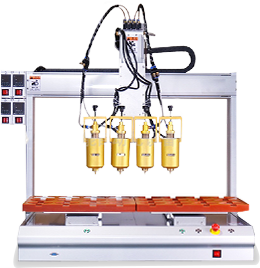

As an optical precision part, the metal adjustment handle is made of aviation-grade aluminum alloy/stainless steel and is formed by ultra-precision processing. The overall structure is an integrated structure of a disc base and a long rod sleeve. The surface is anodized (aluminum alloy model) or mirror polished (stainless steel model). It has a delicate texture and excellent anti-corrosion performance. Its core function is to provide precise adjustment support for optical instruments (such as microscopes, spectrometers, laser collimators). By turning the handle, it can realize functions such as stage displacement, optical path angle fine-tuning, and lens focal length control. With millimeter-level control accuracy, it ensures accurate observation, detection, and calibration of the optical system. It is a key component for human-computer interaction and fine adjustment of optical precision equipment.
The surface treatment process strictly controls the reflectivity (the reflectivity of the aluminum alloy model after anodizing is less than 10%, and the reflectivity of the stainless steel model after mirror polishing and matte treatment is less than 8%) to avoid the reflection of the handle during adjustment. Interference with optical observation; the material has non-magnetic properties (aluminum alloy is naturally non-magnetic, and stainless steel uses non-magnetic steel), which does not affect the magnetic field environment of the optical system.
Features | Parameters (aluminum alloy / stainless steel) |
Processing accuracy | Sleeve inner hole tolerance ±0.005mm, fit clearance <0.01mm |
Adjustment accuracy | 0.02mm displacement adjustment |
Material properties | Aluminum alloy: density 2.8g/cm³, tensile strength 300MPa+ Stainless steel: density 7.93g/cm³, tensile strength 500MPa+ |
Optical interference | Reflectivity <10%/<8%, no magnetic properties |
3. Product Details
During the R&D stage, we collaborated with optical equipment manufacturers to simulate mechanical transmission and optical interference risks during handle operation for scenes such as microscope stage adjustment and spectrometer optical path calibration, and customized handle structure and surface treatment solutions. In the production process, we select aviation-grade raw materials, mill and turn them through a five-axis linkage machining center, and then treat the surface through anodizing (aluminum alloy) or matte polishing (stainless steel). Each batch of products is tested for dimensional accuracy by a three-coordinate measuring instrument and for reflectivity by a spectrophotometer.
The finished product is applied to scientific research microscopes to achieve micron-level displacement of the cell sample stage to facilitate precise observation; with a laser collimator, the optical path angle is fine-tuned to ensure the accuracy of laser beam alignment; in spectrometer calibration, the grating rotation is controlled to optimize the accuracy of spectral acquisition. From R&D to application, with the characteristics of ultra-precision transmission, lightweight strength balance, and low optical interference, it has become the "precision at the fingertips" of optical precision equipment, making every adjustment precisely controllable and enabling the ultimate precision of optical operations.
 Headquarters tel.
Headquarters tel. E-mail.
E-mail.